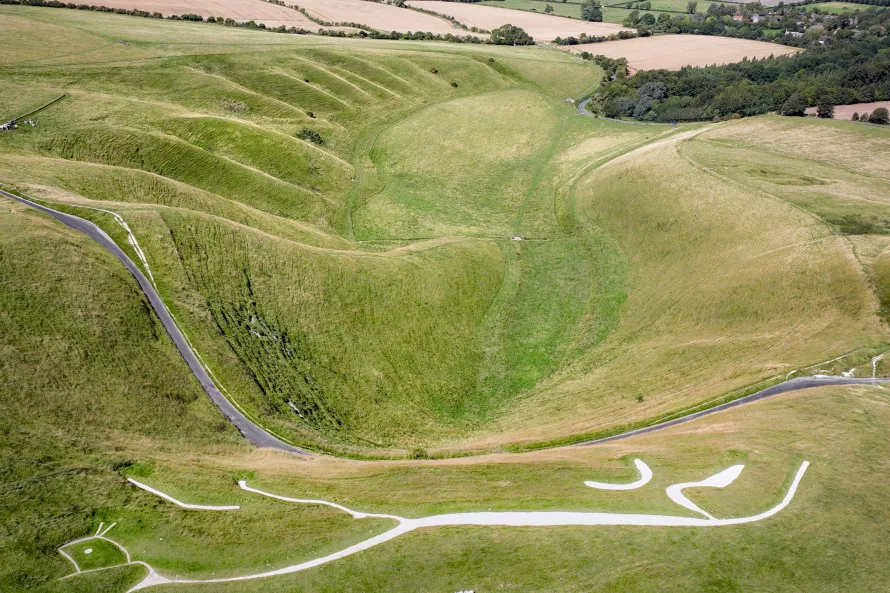The creators of the White Horse deliberately chose the most dramatic landscape setting in the region – the north-facing scarp of the chalk downland, which gives soaring views of the Thames Valley, the Chiltern Hills and Cotswolds beyond.
The chalk downland was for 60 million years a seabed, into which there was a continuous drizzle of shells as countless sea creatures died. As the waters retreated the chalk bed formed a dome, which spread from northern France to southern England. Where the English Channel cut though the chalk we can now see the gleaming white cliffs. This was Albion to the Romans – the white land.
Earth is the only known planet in the universe to be constantly activated by the movement of tectonic plates. As the plate of Africa pushes northwards, at about the rate of a fingernail growing, it has pushed up the rocks of the Alps and in England shunted the chalk to create a succession of scarps.
More recently, about 12,000 years ago, after the end of the Ice Age, melting permafrost and massive mudflows etched the flank of the chalk. This created the huge scoop below the White Horse, now known as the Manger, and the spectacular folds in its sides known as the Giant’s Staircase.
To one side Dragon Hill, an isolated pyramid of chalk. This is a natural feature, though probably modified by human activity to give it a flattened top and much quarried around the lower edges.

